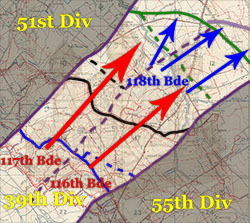
Who Were
The Cambs
The Cambs
at War
1/1st Btn 1914-1919
1914 - 1/1st Overview
1915 - 1/1st Overview
1915 - St Eloi
1915 - Fosse Wood
1916 - 1/1st Overview
1916 - The Schwaben
1916 - St Pierre Divion
1917 - 1/1st Overview
1917 - St Julien
Insignia, Medals & Books
Remembering The Cambs
Biographies
About Us &
This Site
The Summer Storm Breaks - St Julien, 31st July 1917
The Ypres salient and the surrounding area had been a hive of activity for months, there was no hiding the fact that the arrival of summer would bring with it some form of offensive in the area. The Cambridgeshires had spent the spring months either in the front line to the north of the city, at the Canal Bank dugouts, training or on seemingly endless working parties. These work duties included road and rail construction as well as bringing up stockpiles of gas, ammunition and all manner of supplies.
In mid July the whole of the 39th Division moved back from the line and moved to a special constructed training area. The location had been chosen and set up to replicate the exact ground the Division was to attack: lines of defence, bunkers and woods were all constructed. Writing about it in the regimental history (The Cambridgeshires 1914 to 1919) Riddell states:
Thus every officer and man knew exactly what was expected of him. It was all very real, except for the absence of shells and bullets – and of the dead and the wounded.
The Cambridgeshires role in the planned attack was, this time, not to be leading the assault; instead it was their turn to be Brigade Reserve. The 39th Division was tasked with taking the village of St Julien, the ground to either side of it and beyond. Three concentric main objective lines had been drawn across the battlefield, called the Blue, Black and Green lines, each representing a key stage in the advance. In the 39th Division’s area of attack an additional objective, called the Purple Line, had been added beyond the Green Line and several secondary “dotted” lines existed between the main objectives.
The carefully thought out plan basically called for an initial assault by two of the Divisions infantry brigades (the 116th and 117th). These brigades would break through the German front line (the Blue Line) and push the assault on to the Black Line. Past the Black Line, near the banks of the Steenbeek, the fresh 118th Brigade would leap frog over these two brigades and drive the attack on to the final objectives.
As the 118th Brigade’s Reserve Battalion the Cambs role in the attack was a little uncertain, it all depended on how things went in that last stage of the attack. It was their job to be behind the attacking units, ready to reinforce any weak areas or block any sudden counter attacks. If things went badly then it would be up to them to hold a line allowing the others to regroup.
With the men well-trained and vast supplies of ammunition and equipment in place, the only factor that seemed to be out of anyone’s control was the weather. Two days of heavy rain at the end of July was having serious impact on the ground and it was starting to look like things would need to be delayed. At midday on the 30th July the rain ceased and the decision that the attack would go ahead was made.
The 3rd Battle of Ypres Begins
At 3.50am on the 31st July 1917, supported by an enormous artillery bombardment, the 116th and 117th Brigades started their attack. They made up just a small section of the overall advance. All along the salient, under the cover of darkness, men advanced. From the Canal Bank dugouts the men of the Cambridgeshires tried to rest, aided by the issue of ear defenders to try and block out the countless thundering artillery. At 5.30am the 118th Brigade moved off and the Cambs made the 2 mile journey to the British front line advancing in Artillery formation over the open ground. Good progress was made and despite the thick fog and sporadic shelling the Battalion crossed the old British front line positions and reached their first objective by 7am.
In front of the 118th Brigade the attack was progressing mostly as planned. By 8am both the 116th and 117th Brigades had captured their sections of the Black Line and the 118th Brigade readied to move again. By now the German artillery fire was intensifying and reports of localized counterattacks were coming in to Divisional HQ. The first messages hinting at problems to the 39th Division’s right flank were also starting to come in. Here the left flank of the 55th Division was starting to falter in the face of heavy enemy machine gun fire. They had taken the Black Line and some infantry and tanks had advanced further but cohesion was starting to fail.
The 118th Brigade Attacks
The 118th Brigade pushed the attack forward into St Julien and the Green Line, moving past the battle weary troops of the 116th and 117th Brigade. The Cambridgeshires, as Brigade Reserve, were split across several locations behind the line of advance. The Cheshires, who were on the right of the attack, were facing heavy opposition and machine gun fire from their right flank was causing growing casualties. It was now becoming clear to those at the front that things had gone wrong on the left flank of the neighbouring division’s attack. This information had filtered through to Divisional HQ some time earlier, however the terrible ground conditions, mist and heavy enemy artillery fire made getting word to the 118th Brigade quickly almost impossible.
The heavy fire coming from the right flank was a sign that the Cambridgeshires would be needed to hold this vulnerable side of the advance, at least until the 55th Division could resume their advance and catch up. One key location in the defence of this flank was a ruined farm complex known as Border House. The farm had already seen fighting earlier in the morning and several tanks had been in action around there. One of these tanks, a Mk IV named G5 “Glenlivet”, had become hopelessly bogged down on the bank of a small stream, just north of the farm.
At around 10.30am A and D Coy advanced to form a defensive line north east of St Julian at an area called Hill 19, B Coy remained in reserve to the south east of the village. Two platoons from C Coy, led by the Coy Commmander Capt Frank Jonas from Duxford, attacked and took up positions in the ruins of the farm at Border House. With the two remaining platoons of C Coy occupying a small defensive line further south, facing east. With the left flank of the 55th Division unable to advance further, C Coy became the right flank of the 39th Division’s captured ground.
A Lonely Place Called Border House
Typical of the old farm complexes that dotted the Flanders countryside, the farm known as Border House to the British and the Prinzenhof to the Germans, had been picturesque in the pre-war years. Surrounded on one side by a large horseshoe shaped pond, the farm consisted of numerous buildings and barns. The farm was surrounded by flat fertile fields, some edged with scattered lines of trees. A short distance to the north was a shallow stream, running east to west called the Hanebeek. The thick and high walls enclosing much of the farm’s courtyard made it an ideal defensive position in the flat landscape. This fact was not missed by the Germans, and soon after they occupied the ground, they turned the farm into a reinforced defensive location.
By the morning of the 31st July 1917, artillery fire had smashed the already heavily shelled farm and surrounding fields. The recent heavy rainfall combined with this shelling caused the ponds and streams to flood into the surrounding land, all adding to the muddy nightmare that was awaiting the attacking infantry and tanks.
The superb commanding officer of the 1/1st Cambridgeshires, Lt Col Ted Riddell, established his Battalion HQ in a captured German concrete gun pit, roughly 250 yards south west of Border House. To the front the attack by the other battalions of the 118th Brigade had taken much of the Green Line, however casualties had been very high. At around 11.20am the Cheshires and Herts, under heavy fire from three sides and facing fierce counterattacks, were forced to pull back. The Germans, acting quickly, surged forward causing further casualties among the retreating men. This sudden collapse of the line of advance forced parts of the Black Watch, who were off to the left, to also pull back to prevent them becoming exposed to enfilading fire. As the only unit still held back in reserve it was down to B Coy to counterattack and try to steady the line.
Holding the Line
With the sudden change in fortune and the failure of the attack on the Green Line, the situation was growing critical. Riddell was forced to order the two platoons from C Coy south of Border House to join B Coy in the planned counterattack. Their old position, south of Border House, was handed over to some tank crewmen from the knocked out tanks and a handful of men from the London Scottish. As these orders were being put into action, A and D Coy, who were now dug in holding a line north east of St Julian on Hill 19, began facing German counterattacks.
The men of A and D Coy held firm, however being so far forward there was little chance of any substantial supplies or reinforcements reaching them. It was down to their own ingenuity to find the ammunition needed to hold back the growing attacks. Several captured enemy machine guns were soon turned, and brought into action. Nearby lay the damaged and abandoned tank, G3 "Gladiator", this derelict behemoth served as a good source of Lewis gun drums and ammunition. Despite inflicting heavy casualties on the attacking enemy, casualties in the two Coys were mounting and with each attack the enemy were getting nearer.
At 12.45pm it was time for B Coy and the two platoons from C Coy to counterattack to the west of St Julien. This courageous charge managed to push the Germans back, taking the pressure momentarily off the survivors from the Cheshires and Herts. For his part in leading this gallant action B Company’s acting company commander, 2nd Lt Jerry Walker, was awarded the Military Cross. From an old Quaker family, Jerry was the son of the headmaster of the Friends School in Saffron Walden. He would go on to be awarded a Bar to his MC for his actions at Tower Hamlets Ridge and a second Bar in 1918.
By now the persistent mist that had blanketed the battlefield had lifted, the clear visibility brought with it more accurate artillery fire from the German guns – the support from British guns being strangely lacking. The communication nightmare facing the British units so far forward meant that getting supporting artillery fire was almost impossible, even the pre-planned bombardments for the 118th Brigades assault had been pitiful. All the while the German artillery fire crashed around them constantly.
The success of the counterattack led by B Coy was short lived; it had however taken the pressure off the Herts for a while, allowing them to regroup. By 1.15pm fresh enemy attacks had pushed B Coy back from the northern half of St Julien. The survivors joined up with the rallied men of the Herts to hold the remaining section of the village. Around the village and surrounding ground, small mixed groups of men from all the units that had taken part in the attacks that morning, including many from the Royal Sussex Regt, were now fighting alongside the Cambridgeshires to hold back the German attacks.
Calling in the Guns
With growing pressure across his front Riddell took the situation in hand. Communication with Brigade HQ had been a failure most of the morning, so Riddell took the decision to report to them in person. Crossing back to the old British front line, under shell fire most of the way, he was able to report the situation and give the artillery valid areas to shell. He then returned to his HQ. His actions undoubtedly steadied the situation. The sudden appearance of accurate British artillery fire caused a lull in the persistent German attacks. This pause gave the men chance to take stock of the situation, where possible the wounded were evacuated, and more ammunition was gathered from the numerous dead and the knocked out tanks.
The men at the Battalion HQ position, like those at Border House and in the line north east of St Julien, had a bogged down tank from the morning attack nearby. G7 “Giggle” had become stuck in the thick mud, its crew dismounting and forming a defensive position around the tank. Several of the tank’s Lewis guns along with large amounts of ammunition were handed over to the Cambridgeshires. These guns were later put into good use from the roof of the Battalion HQ.
Fresh German Attacks
At 4pm, after a brief attack by several German aircraft, the incoming artillery fire increased and large numbers of enemy soldiers were seen advancing. Once again, the Cambridgeshires held firm against waves of infantry attacks and heavy shellfire. Casualties were reaching a critical level, with all of the officers north of St Julien killed or wounded. In the face of these losses, D Coy’s Company Sergeant Major, George Burbridge, took command of much of the front line. For his bravery and skillful command he was later awarded the Military Cross – he was one of many Cambridgeshires singled out for a bravery award that day.
Despite the determined stand and the intense rifle and Lewis gun fire coming from the Cambs positions, with each attack the Germans were closing in. The chances of holding the line were slim and it was looking more likely that A and D Coys would be cut off. Facing fire from three sides the order was given for these Coys to fall back to a line south of the Hanebeek. This withdrawal was achieved with minimal casualties and the muddy survivors from A and D Coy set up in the new line, supported by a mixture of men from other units.
Mounting Losses
With the withdrawal from the north side of St Julien, Border House was now even more exposed and the exhausted defenders clung on, doggedly holding out. C Coy’s commanding officer, Capt Frank Jonas had fallen earlier in the fighting and most of the men were now killed or wounded. There was no shelter or escape for the wounded; men simply remained at their rifle or Lewis gun until killed or unconscious. With ammunition all but exhausted one Lewis gunner, an unassuming fenland farm labourer named Walter Muffett, made repeated trip to the knocked out tank “Glenlivet” for ammunition.
The Border House defenders, now acting like a breakwater in the line of the enemy advance, were being battered and more enemy soldiers were pushing further south. The whole position at St Julien was starting to look very vulnerable. On top of this grave situation the British guns joined the German gunners in shelling the Cambridgeshires positions. With their own artillery fire crashing down on them, Riddell was facing a losing battle. To cling on for much longer with no sign of reinforcements would mean risking his whole battalion. Like a cruel parting blow a shell, landing beside Battalion HQ, killed the larger than life legend in the pre-war battalion, CSM Herbert Pull. His death ended a service in the Cambridgeshires that stretched back to the heyday of the Volunteer Battalion.
Riddell was left with no choice but to order A, D and C Coys pull back to the German trench called Canteen Trench, where a new defensive line was being formed. B Coy and the two platoon of C Coy, holding the ground to the west of the Steenbeek in St Julien, along with the Black Watch on their left would hold firm with the Steenbeek forming their flank. After issuing this order, Riddell set about halting their own artillery guns that were still firing on their positions. Racing back to the nearest position with working communication he was able to stop the fire.
Final Stand at Border House
The plan withdrawal called for the men to fall back under the cover of the collection of Lewis guns now defending the Battalion HQ. As both A and D Coys started a slow and organised withdrawal, firing continued uninterrupted from Border House. A runner, carrying a note from the defenders finally reached Riddell. Later writing about it in the regimental history he notes:
The runner, with a bandaged head, came over from Canvas Trench. He brought a written message out of his pocket, handed it to me and collapsed to the ground…
I read the message:
“I received a message, by orderly, to retire, but as Captain Jonas, before he was killed, said we were not to retire without written orders from the C.O., I am holding Border House. There are only three of us left alive, and two of those chaps is wounded. I am holding Border House until I get written order to retire. (signed) Private Muffett 7.30pm
A written order from Riddell quickly got through to the survivors of the Border House garrison and the position was finally abandoned. Muffett, though wounded several times, survived the fighting. Riddell put him in for the Victoria Cross for his bravery in getting ammunition and manning his position for so long. The application was however downgraded to a Distinguished Conduct Medal, but his gallant deeds entered regimental legend.
Withdrawal
The Lewis guns firing from the Battalion HQ remained until the last of the men had pulled back. The Battalion’s adjutant, Capt Baynes Smith, pipe firmly fixed in his mouth had manned a Lewis gun for much of the afternoon. With the survivors of the Battalion now safely back behind the new front line Riddell and his handful of Battalion Staff finally left the gun pit.
Official records, such as both the Battalion and Divisional war diaries, state that B Coy and the troops remaining west of St Julien were simply pulled back after 8pm. However Riddell, writing in the regimental history adds further details. He states that after he reached the new British front line he discovered that it was believed the whole of St Julien was in German hands and was to be shelled. Knowing that there were still men holding half of the village, including a large number of wounded, he quickly rounded up men to evacuate the position before the shelling started. With the assistance of men from the Sussex Regt this was accomplished and St Julien was frustratingly abandoned.
As a rainy dawn broke over the St Julien battlefield, the shattered remains of the 118th Brigade were holding a section of the new front line. The fighting had mostly died down and at noon the Cambs were relieved and left the front line for a rest.
A Moment to Rest
The 1/1st Battalion, Cambridgeshire Regiment, had started the attack as an understrength battalion in Brigade Reserve. They had advanced with only around 470 fighting men, by August 1st the Battalion had lost 16 officers and 286 other ranks killed, wounded or prisoner. Later figures confirm that 65 men were killed over the 24 hours and numerous more were to sadly succumb to their wounds in the following weeks. The 39th Division’s attack on the ground around St Julien on the 31st July 1917 amounted to the loss of 145 officers and 3716 other ranks killed, wounded and missing.
The dogged determination of the Cambridgeshires at St Julien became legendary in the annals of the Battalion. Numerous acts of great bravery, sacrifice or leadership were singled out and resulted in many gallantry awards. Riddell received a well earned bar to his DSO and five officers and one warrant officer were awarded MCs. Awards among the other ranks came to three DCMs (including Muffett’s downgraded VC) and almost 30 MMs.
The Battalion finally moved back for a rest and refitting on 5th August. With the summer offensive only just getting started, the Battalion was needed back at an effective strength as soon as possible. Two weeks later, after numerous drafts of replacements from the UK based reserves, the 1/1st Cambridgeshires returned to the front line around Ypres, ready for their next part in the battle...

Albert Mynott, awarded the MM during the build up to the battle.
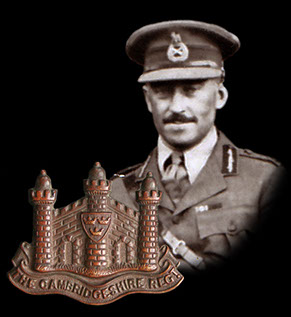
Lt Col "Ted" Riddell DSO

Walter Dilley, killed during the fighting.
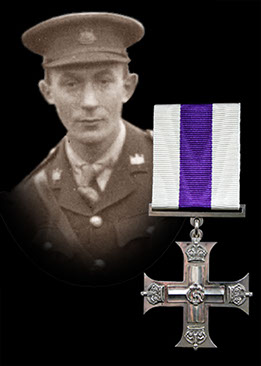
2nd Lt Jerry Walker, awarded the MC for leading the charge made by B Coy.

Edgar Anderson, awarded the DCM.
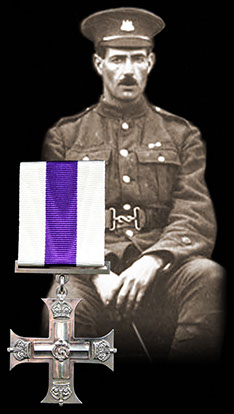
D Coy's CSM, George Burbridge MC.
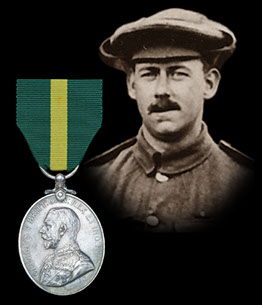
CSM Bert Pull, killed outside Bn HQ.
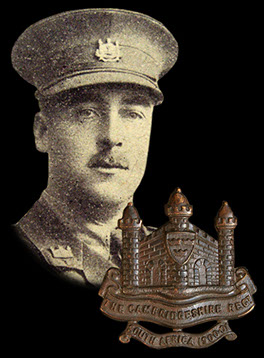
Capt Frank Jonas, killed commanding the garrison at Border House.

This site went live on the 14th February 2015 to mark 100 years since the 1/1st Cambs went off to war.
WE WILL REMEMBER THEM
Email us: cambsregt@gmail.com
Copyright 2015, 2016, 2017, 2018, 2019 by Felix Jackson. The information and images on this site should not be reproduced without prior permission.
